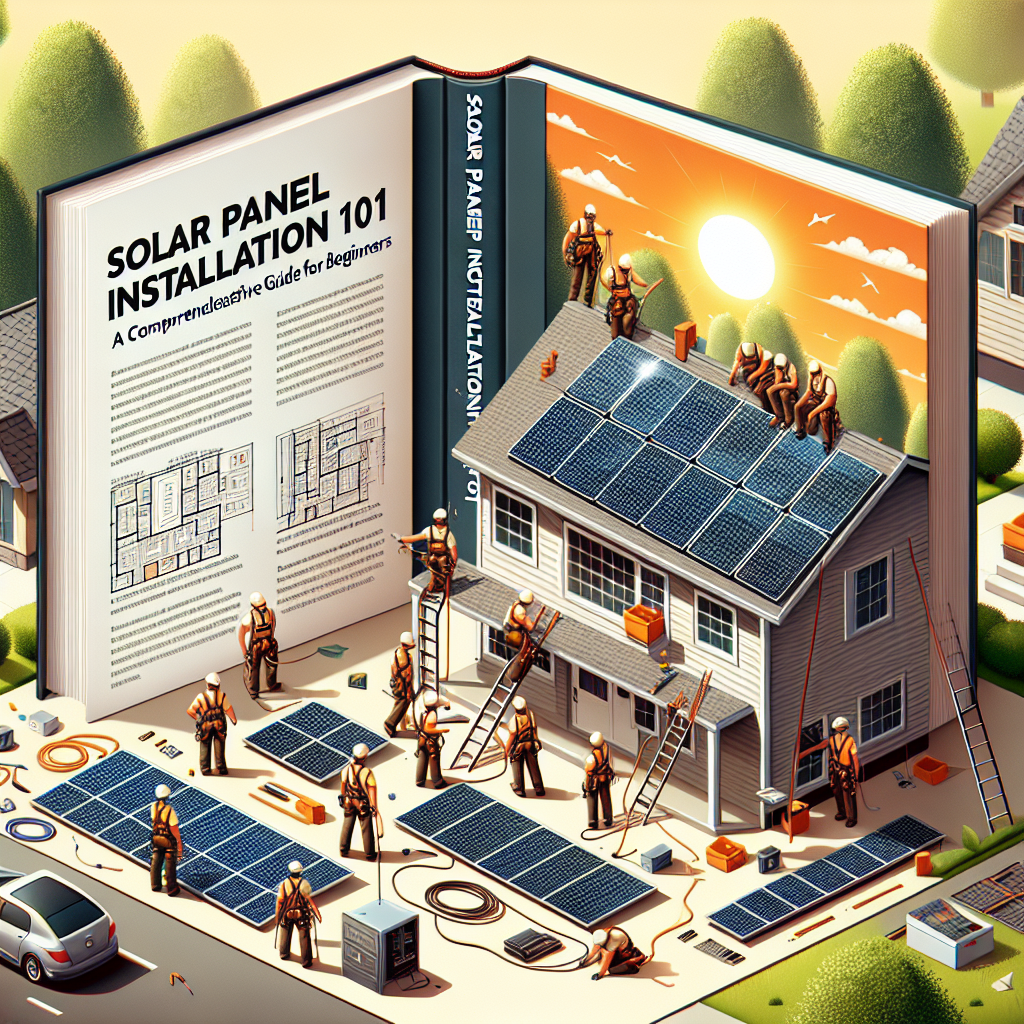In an era where sustainable energy is becoming more crucial, the interest in solar panel installation is skyrocketing. If you’ve been considering this energy-saving step but feel overwhelmed by the process, fear not! This comprehensive guide will demystify solar panel installation, empowering you to make informed choices for your home.
Understanding Solar Energy
What is Solar Energy?
Solar energy is harnessed from sunlight via solar panels, converting it into electricity. This renewable resource not only reduces your carbon footprint but also has the potential to significantly lower your electricity bills.
Why Go Solar?
1. Environmental Benefits:
By using solar energy, you are contributing to a cleaner environment. Solar power reduces greenhouse gas emissions and reliance on fossil fuels.
2. Financial Savings:
While the initial investment can be significant, the long-term savings on electricity bills can be substantial. Many homeowners recoup their investment within a few years through reduced energy costs.
3. Energy Independence:
Generating your own electricity allows you to be less reliant on utility companies and protects you from fluctuating energy prices.
The Basics of Solar Panel Installation
Types of Solar Panels
1. Monocrystalline Panels:
Known for their high efficiency and longevity, these panels are made from single crystal silicon. The more efficient nature means that they take up less space on your roof, making them ideal for smaller areas.
2. Polycrystalline Panels:
These panels are created from multiple silicon crystals and tend to be less expensive, although they are slightly less efficient than their monocrystalline counterparts.
3. Thin-Film Panels:
These versatile panels are lightweight and easy to install but are generally less efficient and require more space.
Assessing Your Home’s Solar Potential
1. Roof Condition:
Before diving into solar panel installation, ensure your roof is in good condition. Look for signs of wear and consider repairing or replacing old shingles.
2. Roof Orientation and Tilt:
South-facing roofs typically receive the most sunlight. The angle of your roof can also affect efficiency; a tilt of 30 to 45 degrees is optimal.
3. Shade Analysis:
Evaluate potential sources of shading, such as trees, buildings, or chimneys. Even partial shading can reduce solar panel efficiency.
The Installation Process
Step 1: Designing Your Solar System
After determining your home’s solar potential, it’s time to design your system. You should consider factors like your energy consumption, local solar regulations, and whether you want a grid-tied or off-grid system.
Step 2: Choosing a Solar Installer
Selecting a reputable installer is crucial. Research local companies, read reviews, and ask for recommendations. A trustworthy contractor should provide a detailed proposal, including estimated costs, timelines, and warranties.
Step 3: Securing Permits
Your installer will help navigate local regulations and obtain necessary permits. This step can take time, so be patient as it will ensure compliance with safety standards.
Step 4: Installation Day
On installation day, your installer will mount the solar panels, connect them to your electrical system, and ensure the system is functioning properly. The installation process generally takes one to three days depending on the size of the system.
Step 5: Inspection and Interconnection
Once installed, your local government or utility company will inspect your system. After approval, they will connect it to the grid. If you choose an off-grid option, you’ll set up a standalone system with batteries.
Maintenance and Monitoring
Although solar panels require minimal maintenance, regular checks are essential. Ensure they’re clean and clear of debris, and monitor your system’s performance. Many systems come with apps for real-time performance tracking.
Financial Incentives for Going Solar
Tax Credits and Rebates
Many governments provide tax credits and rebates to incentivize solar panel installation. Check local and federal options to maximize your savings. In the United States, the Federal Investment Tax Credit (ITC) offers a significant reduction in installation costs.
Financing Options
If upfront costs are a concern, consider financing options like solar loans or leases. These options allow you to spread payments over time while still enjoying immediate savings on your energy bills.
Conclusion: Empower Your Journey to Sustainability
Embarking on the journey to install solar panels can seem daunting, but you are not alone. By understanding the basics and following this guide, you’re well on your way to making an environmentally-conscious and cost-effective decision for your home. Whether you’re motivated by sustainability, savings, or energy independence, solar panels represent a bright investment in your future.
Now, let’s get started on your solar journey! Is it time to reduce your reliance on fossil fuels and embrace a cleaner, more sustainable energy source? The sun is shining, and the opportunity is ripe for the taking!


